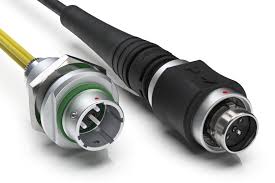
Enhancing Electrical Systems with Versatile Connectors: A Guide to Seamless Connectivity
The Importance of Connectors in Electrical Systems
Connectors play a crucial role in electrical systems, serving as the link between various components to ensure seamless operation. These small but essential devices are responsible for establishing and maintaining electrical connections, enabling the transfer of power and signals within a system.
One key benefit of connectors is their versatility. They come in a wide range of types, sizes, and configurations to suit different applications. From simple two-pin connectors to complex multi-pin connectors, there is a connector for every need.
Connectors also provide flexibility in system design and maintenance. They allow for easy installation and removal of components without the need for soldering or other permanent connections. This modularity simplifies troubleshooting and repair processes, saving time and effort.
In addition to their practical benefits, connectors also contribute to system reliability. By ensuring secure and stable connections, connectors help prevent signal loss, electromagnetic interference, and other issues that can compromise system performance.
When selecting connectors for an electrical system, factors such as current rating, voltage rating, contact resistance, and environmental conditions must be considered to ensure compatibility and reliability. Proper installation techniques are also crucial to maximise the lifespan and performance of connectors.
In conclusion, connectors are essential components in electrical systems that enable efficient communication and power transfer between various devices. Their versatility, flexibility, and reliability make them indispensable in modern technology-driven environments.
“Defining Computer Connectors: Understanding Their Role in Technology”
“Exploring Connector Varieties: The Three Primary Types”
4. “Grammar Essentials: The Function
- How many connectors are there in English?
- What is a connector in computer?
- What are the 3 types of connectors?
- What is a connector in English grammar?
How many connectors are there in English?
The number of connectors in English is vast and diverse, reflecting the language’s rich history and global influence. English features a wide array of connectors, including conjunctions like “and,” “but,” “or,” and “because,” as well as transitional phrases such as “however,” “meanwhile,” and “in addition.” These connectors serve different purposes in linking ideas, sentences, and paragraphs to create coherent and cohesive communication. Understanding the various types of connectors in English is essential for effective writing and speaking, allowing individuals to express their thoughts clearly and connect their ideas logically.
What is a connector in computer?
A connector in a computer is a hardware component that serves as the interface between different devices or components within the system. It allows for the transfer of data, power, or signals between various peripherals such as monitors, keyboards, mice, printers, and external storage devices. Connectors come in different shapes and sizes to accommodate specific connection requirements, and they play a crucial role in enabling seamless communication and interaction between different parts of the computer system.
What are the 3 types of connectors?
When it comes to connectors, there are three main types that are commonly used in various applications: first, we have the wire-to-wire connectors, which are designed to connect two separate wires together. Next, there are wire-to-board connectors, which establish a connection between wires and printed circuit boards. Lastly, we have board-to-board connectors, which link two PCBs together. Each type of connector serves a specific purpose and plays a vital role in ensuring seamless connectivity within electrical systems.
What is a connector in English grammar?
In English grammar, a connector serves as a linking device that connects different parts of a sentence or text to establish coherence and logical flow. Connectors, also known as conjunctions or linking words, play a vital role in structuring written and spoken language by indicating relationships between ideas, adding information, showing cause and effect, or contrasting viewpoints. Examples of connectors include words like “however,” “therefore,” “although,” and “in addition,” which help to guide the reader or listener through the text and clarify the relationships between various elements of the discourse. Understanding how to use connectors effectively is essential for creating well-structured and cohesive communication in English language contexts.
